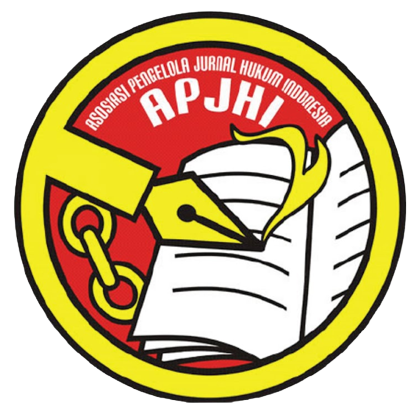GAGASAN PEMBENTUKAN LAPAS KHUSUS NARKOTIKA DI PROVINSI RIAU MENURUT KLASIFIKASI KEJAHATAN DIKAITKAN DENGAN TUJUAN PEMIDANAAN
Abstract
Keywords
Full Text:
PDFReferences
Atmasasmita, Romli, 1996, Sistem Peradilan Pidana Perspektif Eksistensialisme Dan Abolisionisme, Bina Cipta, Jakarta.
Badudu, J.S., 1998, Membina Bahasa Indonesia Baku, Pustaka Prima, Bandung.
Bahri, Syaiful, 2009, Perkembangan Stelsel Pidana Indonesia, Total Media, Yogyakarta.
http://batamnews.co.id/berita-18998-lapas-di-riau-penuh-pengguna-narkoba-pemerintah-bangun-penjara-khusus--.html, diakses tanggal 02 juni 2018.
http://www.harianterbit.com/hantercitizen/read/2017/10/24/88606/57/27/tajuk-bisnis-narkoba-di-lapas, diakses tanggal 02 Juni 2018.
Marcos, Megawati, 2014, “Tinjauan Yuridis Tentang Pemidanaan Bagi Pecandu Narkotika”, Jurnal Hukum, Fakultas Hukum Universitas Atmajaya, Yogyakarta, 2014.
Muladi, 2004, Lembaga Pidana Bersyarat, Alumni, Bandung.
Poernomo, Bambang dan Aruan Sakidjo, 1990, Hukum Pidana Dasar Aturan Umum Hukum Pidana Kodifikasi, Ghalia Indonesia, Yogyakarta.
Poernomo, Bambang, 2006, Pelaksanaan Pidana Penjara dengan Sistem Pemasyarakatan, Liberty, Yogyakarta.
Simorangkir, Jct, 2010, Kamus Hukum, Aksara Baru, Jakarta.
Sudarto, 2007, Hukum dan Hukum Pidana, Alumni, Bandung.
Sudarto, 2010, Kapita Selekta Hukum Pidana, Alumni, Bandung.
Suwarto, “Ide Indivudualisasi Pidana Dalam Pembinaan Narapidana dengan Sistem Pemasyarakatan”, Jurnal Equality, Vol. 12 No. 2 Agustus 2007.
Warta Pemasyarakatan, Hantu Itu Bernama Narkoba (Dari Penegak Hukum Menjadi Terhukum), Jakarta, Direktorat Jenderal Pemasyarakatan, Nomor 46 Tahun XII Maret Tahun 2011.
DOI: http://dx.doi.org/10.30652/jih.v7i2.5597
Refbacks
- There are currently no refbacks.
Jurnal Ilmu Hukum has been indexed by:
|

.png)





G.png)




